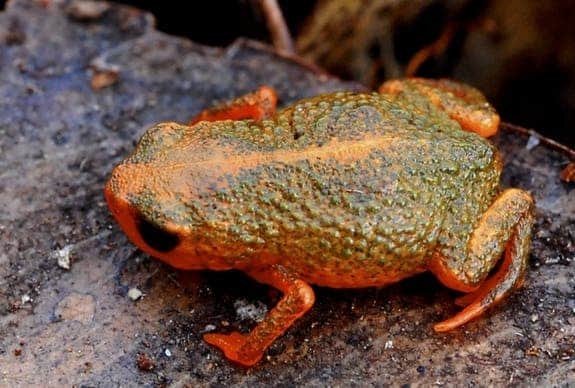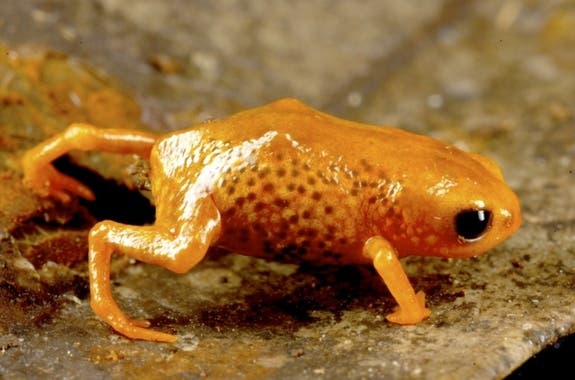Seven miniature species of frogs living on seven different mountain tops sounds like the premise for the next Kung Fu Panda sequel. But as researcher Marcio Pie of the Federal University of Parana and his colleagues show in a paper published in PeerJ., it is what they have found in the Atlantic Rainforest of Brazil. Measuring under a centimeter in length on average, the miniature members of the frog genus Brachycephalus like to keep to their own confined territories and have evolved into many varied, but hard to find, species.

Image via: www.washingtonpost.com/
Marcio and his colleagues had to trek up small but rugged mountains, many of which lack well-marked trails to find the little frogs. Given that the area is so rich in these tiny amphibians and since each species holds to one mountain top, it’s assumed that each new mountain searched will yield a new species. If we can catch them.
“It takes a lot of practice and sometimes it’s very frustrating, to go up the mountain for many hours and come back empty-handed,” Pie told the BBC. “You can hear them singing and there’s probably hundreds of them, but you simply can’t catch them! Because once you get closer, just from the vibration in the ground, they keep silent for, say, 20 minutes or half an hour. And then you have to go through the leaf litter very carefully with your hands,” he said.
The main characteristics differentiating between the frogs, many of which have fewer fingers and toes than most in order to optimize for their size, is skin color and texture. They produce varying levels of a neurotoxin called tetrodoxin for self-defence, and their bright skin colors are a warning to potential predators.

Image via: www.livescience.com
But it is their exclusive habitat, not predators, that gives Pie ground for concern. He and his colleagues warn that the frogs are in danger of extinction:
“The species is known from a restricted area that is under a variety of sources of perturbation, including deforestation, fire, and cattle farming—even though it theoretically should have been protected given its current status as a private reserve (“Reserva Particular do Patrimônio Natural”). Therefore, the conservation of this locality is necessary for the survival of this species.” they remark in their paper.
Logging and climate change pose serious threats to the tiny frogs’ survival. They are very sensitive to temperature, this being the main reason they never expanded their territory beyond the mountain tops. To ensure their survival, we may need to start raising them in captivity, say the researchers.


